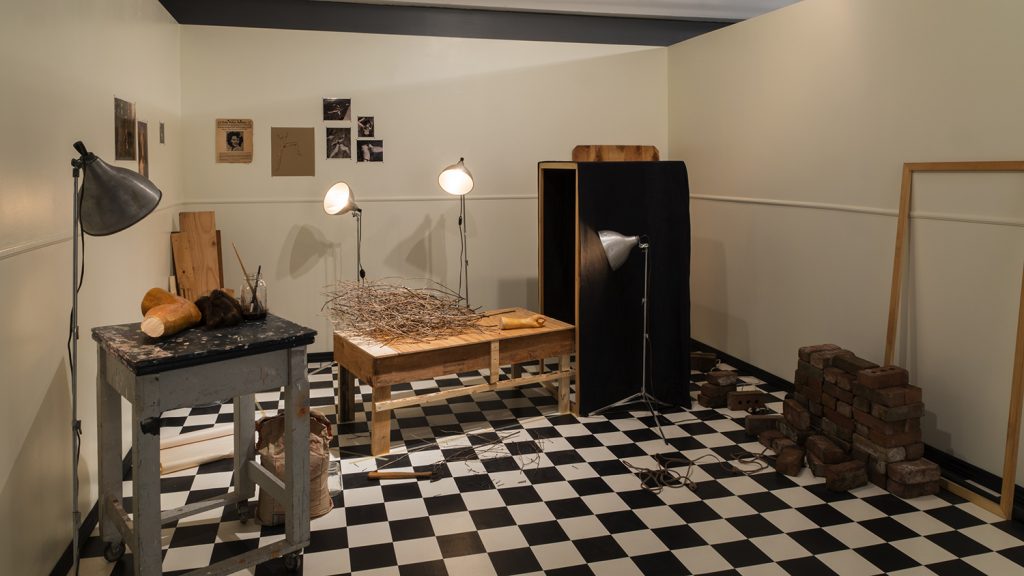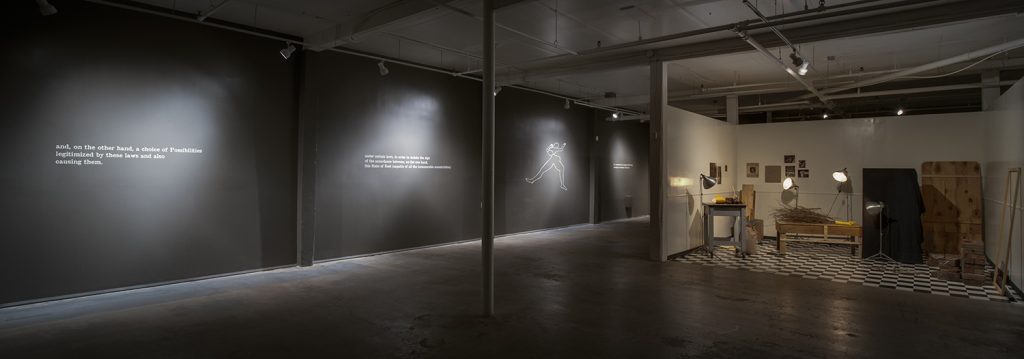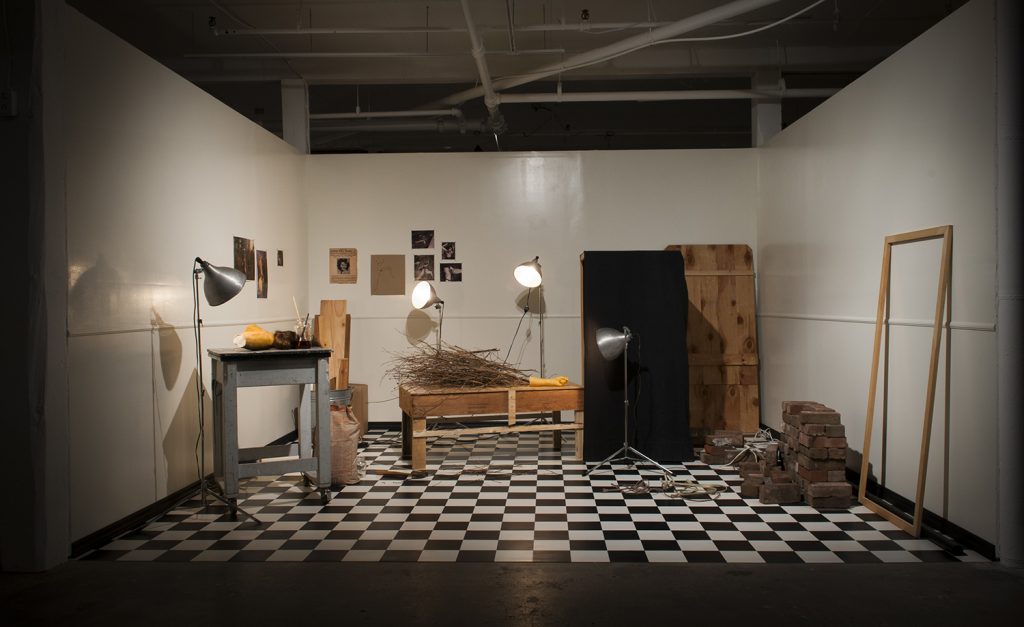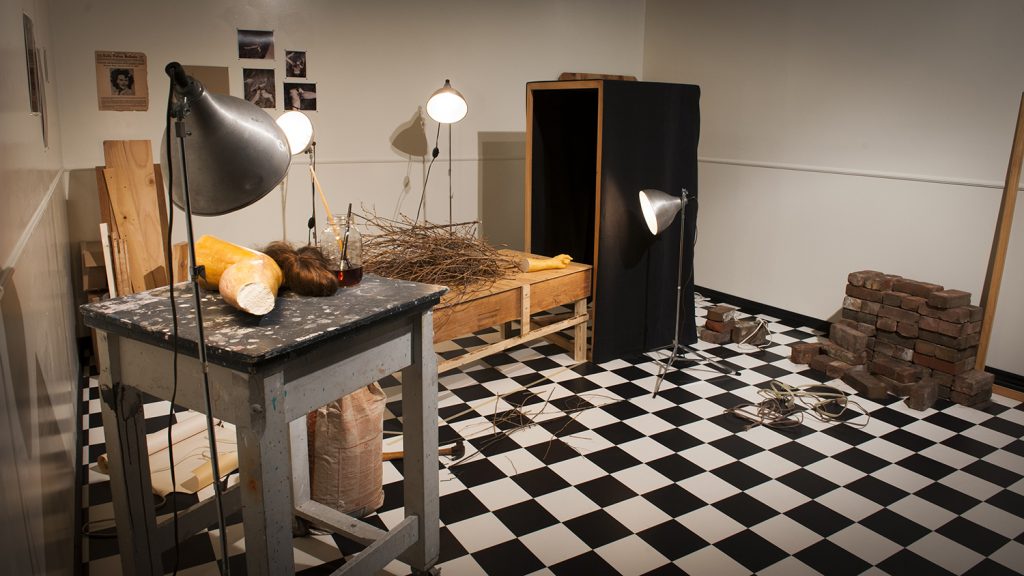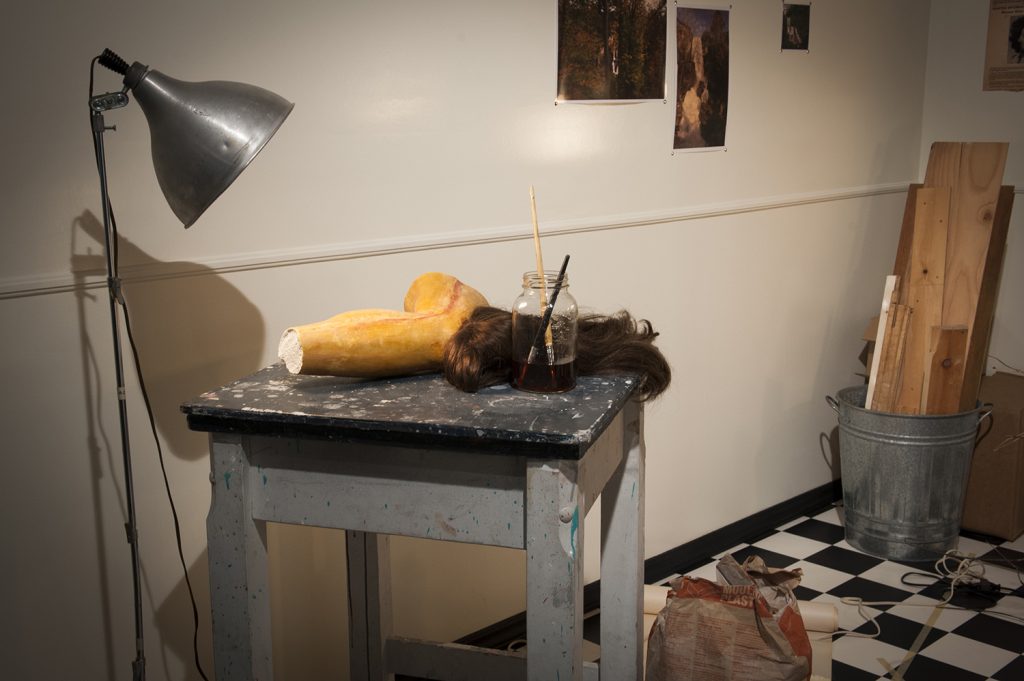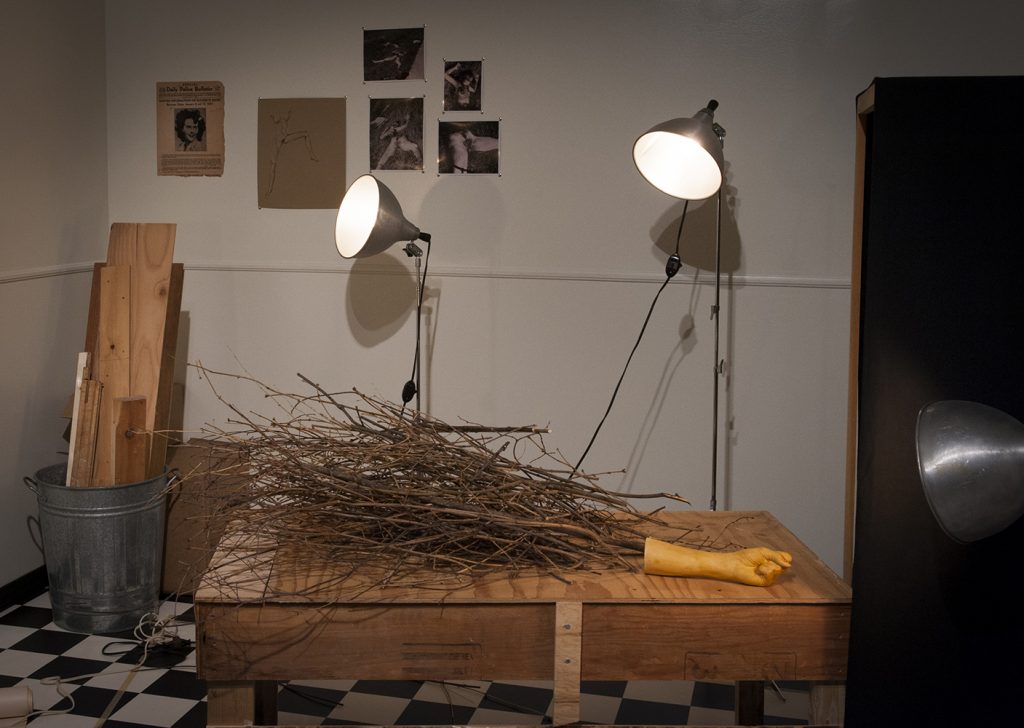Behind Closed Doors : Body of Evidence
The body of work entitled Behind Closed Doors: Body of Evidence explores the question of the artist as a criminal. This reflection in a figurative sense leads Niedertsrass to question the artist’s research process and his or her way of oscillating between the acceptable limits of the rules of art without transgressing them.
The main objective of this research is firstly to bring the viewer to reconstruct a story, a scene, a speculative action in connection with the installation which it proposes. Based on the work of Marcel Duchamp entitled Étant donnés: 1° la chute d’eau, 2° le gaz d’éclairage (1946-1966) as well as the instruction manual for the construction of this installation, Niederstrass attempts to simulate the artist’s work space while adding some components guiding us towards clues that will allow us to assume the potential involvement of Duchamp in the murder of Elizabeth Short, known as the “Black Dahlia”.
According to the author Jean-Michel Rabaté, the representation of women in Duchamp’s piece would refer among other things to this crime scene, this tragic event which terrified the American public, the murder of this young woman discovered severed in two at the waist on January 15, 1947 in a vacant lot of Los Angeles. Furthermore, Steve Hodel, in an essay titled Black Dahlia Avenger: A Genius for Murder (2003) defends the thesis that his own father, George Hodel, a surgeon, would be the murderer of Elizabeth Short. Art loving intellectual and amateur photographer, George Hodel was closely linked to the photographer Man Ray. In his book, Steve Hodel examines the possible relationship between the mutilations performed on the corpse and famous photographs entitled Minotaur and Observatory Time: The Lovers by Man Ray: he was a great friend of Duchamp and would have possibly been aware of this murder before it happened.
The interest of elaborating a work inspired by events which testify to violent acts and refers to the sensationalism of the crime scene which emerges from mass culture, resides in the fact of wanting to reconcile the general public with contemporary art, which often may seem hermetic. This working method or model offers a different, but viable, way of criticizing and understanding the image which is based on the index, the trace and the residue.
This body of work was initially presented in 2015 at Gallery 101 in Ottawa and subsequently shown in 2018 at CIRCA – Art Actuel in Montreal.
Photo credit : Caroline Cloutier and Mathieu Proulx




